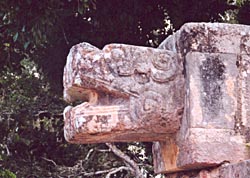
The Maya were expert mathematicians. In fact, it is commonly accepted that the Maya were the first to discover the concept of the number zero.
In addition, the Maya were accomplished astronomers. With their detailed understanding of the stars and the rotation of the sun, they were able to extend their calendars roughly 2,000 years into the future that were correct to within an hour. They managed this accomplishment centuries before Europeans came up with the current calendar system.
The Observatory, pictured above, is an example of the architecture of the early Maya. It is a breathtaking symbol of the Mayan advances in mathematics, engineering and astronomy. Obviously, the domed stone structure is a feat of engineering in such early times. But more fascinating is the existence of several windows strategically placed around the dome that allow views of specific planets and stars at times of religious significance in the Mayan year. 
Why was this knowledge so central to an agrarian society? The answer lies in the religion of the ancient Maya.
As farmers of maize, their lives revolved around the assurance that each year the rains would come and fertilize their crops. On a semi-arid plateau such as the Yucatan peninsula, the rain was not always a given. This fact gave rise to a religion that worshipped gods of rain, fertility, and earth. They became masters at predicting the precise times at which they must sacrifice to guarantee the rains.
One can see evidence of their religion covering their temples and religious structures. The recurring motifs of serpent, corn, waves, and face-like masks with open mouths appear adorning all the structures. One such example is in the picture above, yet another of the early temples at Chichen Itza. And below, one can see the serpent heads so prominent in the architecture. 
|


